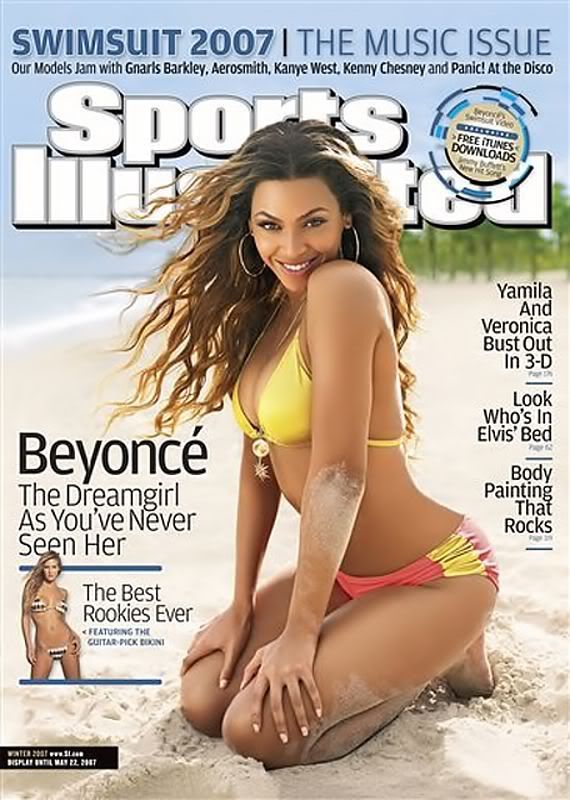 |
| More typical Sports Illustrated cover |
In "Framed and Mounted" by Rowe, "the most important object in sports photography is sport's prime instrument, the human body" (143). I think this is a little strange considering that many of the covers of magazines, especially ones with women, are photoshopped. Yes, the body is important and the prime topic in sports, but it is also altered. In the next section, Rowe even claims that "when the image is caught, it can be altered in many ways to improve its impact" (143). Even though the image is altered, it is acceptable because it makes a bigger impact? So would the impact be considered false or modified due to the change in the picture? What do you think? Should sports magazines be allowed to alter their pictures? Should they have a disclaimer saying that the photo has been altered? Why or why not?
Later on, Rowe claims that how sports magazines show women versus men is radically different. Men are almost always shown in an action shot, while women are shown in "passive, non-athletic roles" (1
46). Is this supposed to make people relate to women more? Are they supposed to make the women seem more motherly, while men are made to seem more dominant in sports? Is this right? Should this be changed?
 |
Sports Illustrated Cover:
Kate Upton who is NOT an athlete |
The only time in which women are more dominant in sports magazines is in the yearly
Sports Illustrated. Rowe mentions another magazine,
Who Weekly, in which they had a front page story claiming to have top athletes pose nude. In fact, the magazine had four pictures. Two were of men and two were of women. One of the men was in an action shot, while the other three pictures were passive shots. The worst part of this spread, in my opinion, was the fact that the two men were only shown torso and up, while the women's whole body was shown.
 |
Beyonce
African-American, but still fits ideal |
Skin color is also a controversial topic that sports magazines have tackled. Rowe states that "models with African ancestry...typically possessed very light-color skin and facial features that conform to the Anglo-American beauty ideal" (166). This poses that racism also occurs in sports magazines as well as sexism. The models that are selected to be shown have to conform to a certain ideal that the magazine wants to appeal to. Should these magazines be more realistic? Is it right to put an ideal out into the world that is realistically unattainable? Wouldn't this cause more problems than solutions?



No comments:
Post a Comment